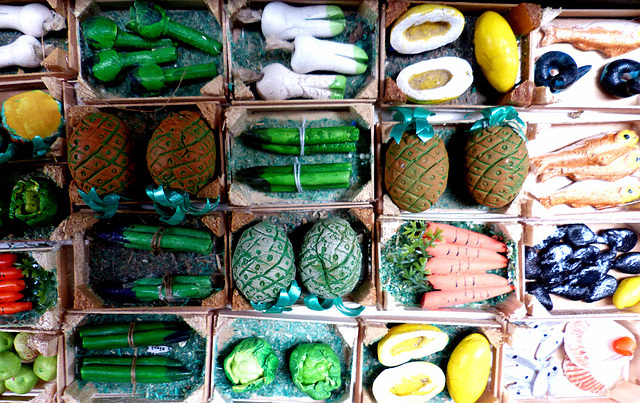Napoli - Stella Maris
Napoli
Napoli - San Francesco di Paola
Napoli - Mount Veusius
Napoli
Minturno - San Pietro Apostolo
Minturno - San Pietro Apostolo
Minturno - San Pietro Apostolo
Minturno - San Pietro Apostolo
Minturno - San Pietro Apostolo
Itri - San Michele Archangelo
Itri - San Michele Archangelo
Itri - San Michele Archangelo
Itri - San Michele Archangelo
Itri - Castello di Itri
Fondi - Castello Baronale
Fondi - Duomo di San Pietro
Fondi - Duomo di San Pietro
Fondi - Duomo di San Pietro
Fondi - Duomo di San Pietro
Fondi - Duomo di San Pietro
Fondi - Duomo di San Pietro
Fondi - Santa Maria Assunta
Napoli
Napoli - Complesso Monumentale Donnaregina
Napoli - Complesso Monumentale Donnaregina
Napoli - Complesso Monumentale Donnaregina
Napoli - Complesso Monumentale Donnaregina
Napoli - Complesso Monumentale Donnaregina
Napoli - Complesso Monumentale Donnaregina
Napoli - Complesso Monumentale Donnaregina
Napoli - Complesso Monumentale Donnaregina
Napoli - Complesso Monumentale Donnaregina
Napoli - Complesso Monumentale Donnaregina
Napoli - Complesso Monumentale Donnaregina
Napoli - Complesso Monumentale Donnaregina
Napoli - Complesso Monumentale Donnaregina
Napoli - Complesso Monumentale Donnaregina
Napoli - Piazza Mercato
Napoli - Maradona
Nola - Singer
Nola - Il Fotografo
Nola . Cattedrale di Nola
Pompei - Mancusi
Location
Lat, Lng:
You can copy the above to your favourite mapping app.
Address: unknown
You can copy the above to your favourite mapping app.
Address: unknown
See also...
Keywords
Authorizations, license
-
Visible by: Everyone -
All rights reserved
-
90 visits
Napoli


Napoli is the regional capital of Campania and the third-largest city in Italy. Its metropolitan area has a population of more than 3 million.
Founded by Greek settlers before 900 BC, Napoli was an important part of Magna Graecia and played a major role in the merging of Greek and Roman society.
Following the decline of the Western Roman Empire Napoli was shortly ruled by the Ostrogoths. Byzantine troops captured the city in 536m but after the Byzantine exarchate, Ravenna fell a Duchy of Naples was created. Over centuries the Duchy´s relations to Rome or Byzanz were hard-fought. In 836 Napoli could repel a siege of Lombard troops with the help of the Saracens, which did not prevent Muhammad I Abu 'l-Abbas in the 850s loot Napoli. In the 11th century, the Duchy hired Norman mercenaries, and in about 1140 it came under Norman control under Roger II, then King of Sicily.
In 1228 Emperor Frederick II founded the first university in Europe here, making Napoli the intellectual center of the kingdom. The conflict between the House of Hohenstaufen and the Papacy led in 1266 to Pope Innocent IV crowning the Angevin duke Charles I King of Sicily. Charles officially moved the capital from Palermo to Napoli.
In 1282 after the "Sicilian Vespers", a successful rebellion on the island of Sicily against the rule of King Charles I, the Kingdom of Sicily was divided into two. The Angevin Kingdom of Naples included the southern part of the Italian peninsula, while the island of Sicily became the Aragonese Kingdom of Sicily.
By the 17th century, Naples had become Europe's second-largest city – second only to Paris – with around 250000 inhabitants.
These small foods are a specialty not only in Italy but also in Spain. Here in Naples, there was a huge selection.
Founded by Greek settlers before 900 BC, Napoli was an important part of Magna Graecia and played a major role in the merging of Greek and Roman society.
Following the decline of the Western Roman Empire Napoli was shortly ruled by the Ostrogoths. Byzantine troops captured the city in 536m but after the Byzantine exarchate, Ravenna fell a Duchy of Naples was created. Over centuries the Duchy´s relations to Rome or Byzanz were hard-fought. In 836 Napoli could repel a siege of Lombard troops with the help of the Saracens, which did not prevent Muhammad I Abu 'l-Abbas in the 850s loot Napoli. In the 11th century, the Duchy hired Norman mercenaries, and in about 1140 it came under Norman control under Roger II, then King of Sicily.
In 1228 Emperor Frederick II founded the first university in Europe here, making Napoli the intellectual center of the kingdom. The conflict between the House of Hohenstaufen and the Papacy led in 1266 to Pope Innocent IV crowning the Angevin duke Charles I King of Sicily. Charles officially moved the capital from Palermo to Napoli.
In 1282 after the "Sicilian Vespers", a successful rebellion on the island of Sicily against the rule of King Charles I, the Kingdom of Sicily was divided into two. The Angevin Kingdom of Naples included the southern part of the Italian peninsula, while the island of Sicily became the Aragonese Kingdom of Sicily.
By the 17th century, Naples had become Europe's second-largest city – second only to Paris – with around 250000 inhabitants.
These small foods are a specialty not only in Italy but also in Spain. Here in Naples, there was a huge selection.
- Keyboard shortcuts:
Jump to top
RSS feed- Latest comments - Subscribe to the comment feeds of this photo
- ipernity © 2007-2025
- Help & Contact
|
Club news
|
About ipernity
|
History |
ipernity Club & Prices |
Guide of good conduct
Donate | Group guidelines | Privacy policy | Terms of use | Statutes | In memoria -
Facebook
Twitter

Sign-in to write a comment.